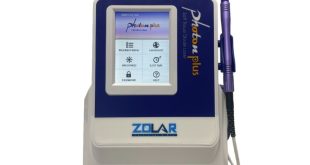A frequent sleep condition that affects people of all ages is insomnia, which is defined by trouble falling asleep, staying asleep, or waking up too early and not being able to go back to sleep. However, depending on the person’s age group, insomnia can present itself in a variety of ways and have different effects. For efficient diagnosis, management, and treatment of insomnia, it is essential to comprehend these age-related variations in symptoms.
Childhood and Adolescence
Compared to adults, children and adolescents with insomnia frequently present with distinct symptoms. Younger people may exhibit behaviors like restlessness, resistance to going to bed, or numerous overnight awakenings because they find it difficult to communicate their sleep problems. On the other side, adolescents may suffer from insomnia as a result of social demands, scholastic stress, or abnormal sleep patterns brought on by technology use.
Common symptoms of insomnia in this age group include:
- Difficulty falling asleep: Children may struggle to settle down due to anxiety or fear of separation, while adolescents might stay awake due to stress or electronic device use.
- Frequent waking during the night: Both children and teens may wake up multiple times, disrupting their sleep cycle.
- Daytime sleepiness: This can manifest as irritability, difficulty concentrating in school, or poor academic performance.
- Behavioral issues: Mood swings, hyperactivity, or increased impulsivity may arise due to chronic sleep deprivation.
Parents and caregivers play a crucial role in identifying insomnia symptoms in younger individuals, as children may not always communicate their sleep difficulties directly.
Young Adults (18-25 Years)
As young adults transition into independence, their sleep patterns and insomnia symptoms undergo significant changes influenced by lifestyle, academic demands, and social activities. This age group tends to experience insomnia characterized by:
- Delayed sleep phase: Difficulty falling asleep before midnight, often exacerbated by irregular sleep schedules and social activities.
- Increased sleep latency: Taking longer to fall asleep due to heightened stress levels, lifestyle choices like caffeine intake, or technology use before bedtime.
- Poor sleep quality: Waking up feeling unrefreshed despite adequate sleep duration, which can impact daytime functioning and productivity.
- Mental health implications: Insomnia in young adults is often intertwined with conditions like anxiety and depression, which can exacerbate sleep disturbances.
The prevalence of insomnia in young adults underscores the importance of adopting healthy sleep hygiene practices and seeking early intervention to prevent chronic sleep problems from developing.
Adults (26-64 Years)
In adulthood, insomnia becomes more prevalent and can be influenced by a myriad of factors such as work stress, family responsibilities, and age-related physiological changes. Symptoms may include:
- Difficulty maintaining sleep: Waking up frequently during the night and struggling to return to sleep.
- Early morning awakenings: Feeling unable to sleep beyond the early hours of the morning, leading to sleep deprivation.
- Daytime impairment: Fatigue, mood disturbances, and decreased cognitive performance due to poor sleep quality.
- Medical comorbidities: Chronic conditions like pain syndromes, gastrointestinal disorders, or hormonal changes can contribute to insomnia symptoms.
Adults are more likely to seek medical assistance for insomnia, often through primary care providers or sleep specialists who can diagnose underlying causes and recommend appropriate treatments, including cognitive behavioral therapy for insomnia (CBT-I) or pharmacotherapy.
Older Adults (65+ Years)
Insomnia prevalence increases among older adults, often attributed to age-related changes in sleep architecture, medical conditions, and lifestyle adjustments. Common symptoms include:
- Advanced sleep phase: Falling asleep earlier in the evening and waking up very early in the morning, leading to insufficient nighttime sleep.
- Fragmented sleep: Waking up frequently during the night due to medical issues like arthritis, nocturia, or respiratory disorders.
- Decreased sleep efficiency: Spending more time awake in bed relative to sleep time, which can contribute to daytime sleepiness and reduced alertness.
- Sleep-disordered breathing: Conditions like sleep apnea become more prevalent with age, exacerbating insomnia symptoms.
Older adults may also experience insomnia as a side effect of medications commonly used to manage chronic conditions, highlighting the importance of medication review and management by healthcare professionals.
Gender Differences in Insomnia Symptoms
Gender differences may have an impact on how symptoms of insomnia manifest and are experienced, according to research. For example, women are more likely than males to report having insomnia; this could be related to hormonal changes that occur during menstruation, pregnancy, or menopause. In addition, women could be more prone to co-occurring disorders like anxiety or depression, which exacerbate the symptoms of sleeplessness.
On the other hand, males may experience symptoms of sleeplessness associated with stress at work, lifestyle choices like drinking alcohol or working shifts, or underlying medical issues like heart disease.
Tips for Managing Insomnia
If you suspect you have insomnia based on the self-assessment or ongoing sleep difficulties, consider the following strategies:
- Sleep Hygiene: Establish a regular sleep schedule, create a relaxing bedtime routine, and optimize your sleep environment.
- Cognitive Behavioral Therapy for Insomnia (CBT-I): This structured program addresses the thoughts and behaviors that contribute to insomnia and promotes healthier sleep patterns.
- Medication: In some cases, short-term use of sleep aids prescribed by a healthcare provider may be necessary, although they are not typically recommended as a first-line treatment.
- Stress Management: Practice relaxation techniques such as deep breathing, meditation, or yoga to reduce stress and promote better sleep.
Seek Professional Help: Consult a healthcare provider if your sleep problems persist despite self-help strategies. They are able to rule out other possible reasons and suggest the best course of action.
Self-Assessment: Are You Experiencing Insomnia?
To assess whether you might be experiencing symptoms of insomnia, consider the following questions:
- Sleep Onset: Do you often lie awake for more than 30 minutes before falling asleep?
- Sleep Maintenance: Do you wake up multiple times during the night and struggle to get back to sleep?
- Early Awakening: Do you find yourself waking up significantly earlier than planned and unable to resume sleep?
- Non-Restorative Sleep: Do you frequently wake up feeling unrefreshed, regardless of how long you slept?
- Daytime Functioning: Do you feel excessively tired, irritable, or have difficulty concentrating during the day?
- Emotional Well-being: Have you noticed changes in your mood, such as increased irritability, anxiety, or feelings of sadness?
- Physical Symptoms: Are you experiencing any physical symptoms that could be related to poor sleep, such as headaches or gastrointestinal issues?
Cognitive Function: Have you noticed any difficulties with memory, decision-making, or overall cognitive function lately?
In summary
The symptoms of insomnia fluctuate greatly between age groups and are impacted by underlying medical disorders, lifestyle choices, and developmental stages. Understanding these age-related variations is essential to developing efficient treatment plans that cater to the particular requirements of each group. Promoting healthy sleep patterns, taking care of underlying medical and psychological issues, and taking into account specific treatment techniques are crucial steps toward enhancing sleep quality and general well-being from childhood through older adulthood. Healthcare professionals can better support people in obtaining restful sleep and maximizing their quality of life by comprehending and treating insomnia symptoms within the context of age-specific obstacles.







